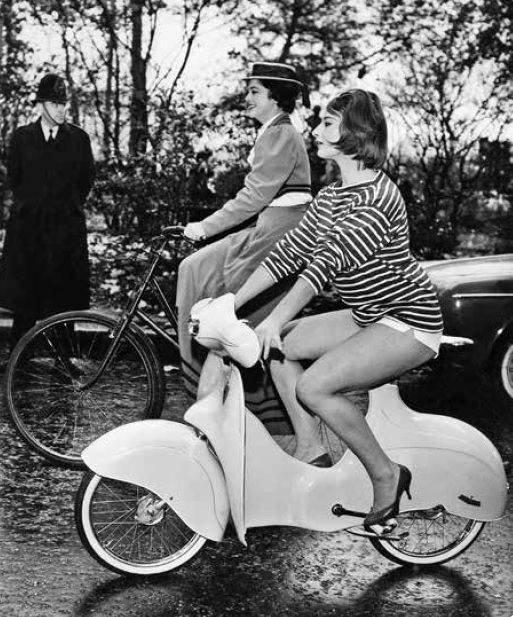French engineer Étienne Bunau-Varilla designed the Vélo Torpille, or Torpedo Bike, in 1913, giving it a Zeppelin-like fairing to make it more aerodynamic. It enabled the French bike racer Marcel Berthet to set a new world record when he covered 5 km on Paris’s Vel d’Hiv track in 5 minutes and 39.3 seconds, about 53 kph. However, the body governing bike racing eventually banned the design because it gave riders an unfair advantage, which is the reason you cannot purchase a Torpedo Bike anywhere today – even if you wanted to.

The Elswick-Hopper Scoo-ped (the name alone was enough to inspire failure) was introduced in the UK in 1959 to convince the Brits that they didn’t really need a car and could enjoy the automobile’s comfort without buying one. The bike’s designer, Maurice Moss, was clearly inspired by 1950s Italian motor scooters. The glass-reinforced polyester cladding was fitted to a conventional steel frame and incorporated scooter-like leg guards. To sell it, Moss targeted people who did not like to ride bikes for fear of getting their clothes – and themselves – dirty and wet. But nobody, and I mean no one at all, bought it, literally and figuratively. Only three dozen Scoo-peds were ever made.

Though it was designed by a Mercedes engineer, Odo Klose, the Sprick Active is remembered as one of the worst bicycle designs of all time. One of the ‘problems’ the Sprick was meant to resolve was to make the handlebars more like a car’s steering wheel. But, it needs to be asked, why fix something that already works well? And (it needs to be said) the Sprick did not even resolve that non-problem because it turned out to be very hard to ride and steer. Made mostly from plastic including the wheels, it was originally designed for the 1982 International Bicycle and Motorcycle Exhibition in Cologne, as an advertisement for the book Cycling Art. About 60,000 pieces were produced. Needless to say, the unique frame and handlebar concept has not been used in other bikes.

And speaking of plastic, the all-plastic Itera was designed in 1982 by an engineering team at Swedish carmaker Volvo to produce a low-maintenance bike for commuters. It had a unisex frame made of acrylonitrile butadiene styrene with wheels moulded from glass-filled polyamide. Unfortunately, it turned out that floppy plastic isn’t the best material for bicycles. The frame’s lack of rigidity made it an exhausting ride and the handlebars tended to snap. Not only that but – like Ikea furniture (another, better Swedish design) – the bikes needed to be assembled by the buyer with tools provided in the box. But (unlike an Ikea chair) it was difficult to assemble and too many of the bikes were delivered with parts missing. The Itera was launched to great PR fanfare and about 30,000 were sold before Volvo gave up on it.

The commercial failure of the Bowden Spacelander proved that bicycle lovers are practical people who want their bikes to work well and last long not to catch the eye. Designed in 1946, the Spacelander was clearly too far ahead of its time. (Its failure also seemed to prove that beauty is in the eye of the customer, not the designer.) Designed by Benjamin George Bowden, the Spacelander’s original concept also included a shaft drive and a dynamo for steep hills so it was definitely not a crackpot concept. But, oh, those swooping front forks. If it had come out in the Swinging Sixties, when sweeping curves and bright colours were the rage, it might have caught on. But probably not.





